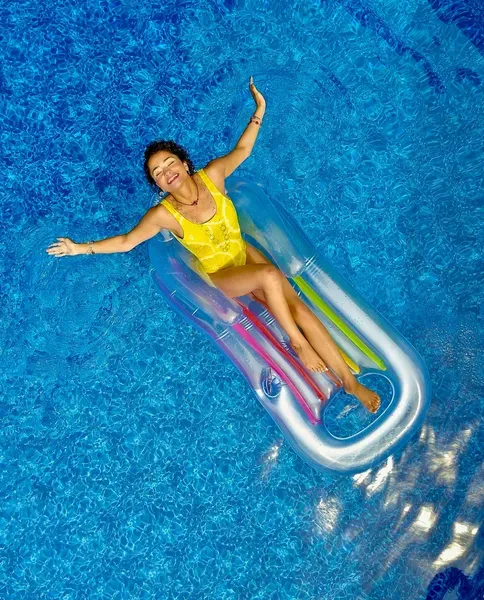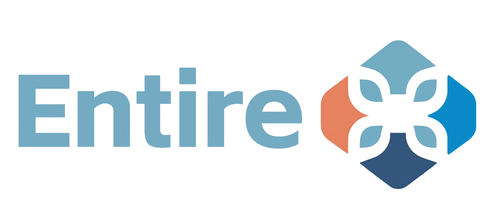Disposable Diapers (HS 9619) & Tariffs: Guide for Hygiene & Baby Care Brands

The 2025 US tariffs on Chinese imports are set to influence the massive market for disposable baby diapers, training pants, and similar absorbent hygiene articles under HS Code 9619. This category is dominated by global giants like Procter & Gamble (Pampers, Luvs) and Kimberly-Clark (Huggies), alongside eco-conscious brands such as The Honest Company and Seventh Generation, and numerous private label offerings. Executives in this sector must analyze impacts on their complex supply chains for raw materials like superabsorbent polymers (SAP) and nonwoven fabrics, evaluate production locations, and ensure products continue to meet safety and performance expectations.
- 1. Diaper Dependency: US Reliance on Global Sources for Disposable Diapers?
- 2. Eco-Diapers & Beyond: Sourcing Materials for Greener Alternatives?
- 3. The Bottom Line on Bottoms: Cost Realities of Diaper Sourcing?
- 4. North American Nappies: USMCA Rules for Diaper Production?
- 5. Diaper Miles: Logistics of Shipping Diapers – Overseas vs. Overland?
- 6. Skin Deep Safety: Critical Checks for Imported Baby Diapers?
- 7. Absorbent Issues: Material & Tech Supply Risks in Diaper Manufacturing?
1. Diaper Dependency: US Reliance on Global Sources for Disposable Diapers?
How reliant is the US market on key source countries (e.g., China, Mexico, Canada) for HS 9619 disposable baby diapers and training pants like Pampers, Huggies, Luvs, or Kao's Merries?
The US diaper market has a mixed sourcing strategy:
* Major Brands (Pampers, Huggies): Primarily manufactured in the USA and Canada for the North American market by P&G and Kimberly-Clark in their own facilities. Mexico is also a key production hub, especially for Kimberly-Clark.
* Imports from China: China has been a source for some private label brands, certain tiers of branded diapers, and specific components or diaper types, but less so for the flagship products of major US brands. Perhaps 10-20% of the total diaper volume might have direct Chinese origin or significant Chinese components.
* Imports from Other Regions (e.g., Japan - Merries, some European brands): Smaller volumes of premium or specialized diapers are imported from Japan and Europe.
* Key Raw Materials (SAP, Nonwovens): While diaper assembly might be regional, the supply chain for critical raw materials like SAP and specialized nonwovens is global, with significant production in Asia (including China), Europe, and the US.
2. Eco-Diapers & Beyond: Sourcing Materials for Greener Alternatives?
Beyond direct Chinese diaper imports, for brands like The Honest Company or Seventh Generation (known for eco-features), what are alternative production countries for key materials (SAP, fluff pulp, nonwovens) and finished goods? Who are major suppliers (e.g., P&G, K-C own plants or contract manufacturers)?
- Finished Goods Production (for brands like Honest Co.): Often utilize contract manufacturers in the USA, Canada, or Europe who specialize in diapers with specific attributes (e.g., chlorine-free pulp, plant-based materials). Some co-packers might source globally for materials but assemble regionally.
- Key Material Sourcing:
- Superabsorbent Polymer (SAP): Major global producers include Nippon Shokubai (Japan), BASF (Germany), Evonik (Germany), Sumitomo Seika (Japan). These companies have plants worldwide, including in the US.
- Fluff Pulp (Cellulose): Sourced from sustainably managed forests, primarily in the USA, Canada, Scandinavia, and South America. Major suppliers include International Paper, Georgia-Pacific, Domtar.
- Nonwoven Fabrics (Topsheet, backsheet, acquisition layer): Global industry with major players like Berry Global (US), Fitesa (Brazil/US), Avgol (Israel/Global), Toray (Japan). Production plants are widespread, including in the US, Mexico, Europe, and Asia.
- P&G and Kimberly-Clark are vertically integrated to a large extent for their core brands, manufacturing many of their own components and finished products.
3. The Bottom Line on Bottoms: Cost Realities of Diaper Sourcing?
How do unit costs compare when sourcing finished diapers from Mexico or Canada (if tariff advantages apply) versus sea freight from Asia (e.g., China, Japan, S. Korea), considering SAP, nonwoven, equipment, and transport costs?
- Mexico/Canada vs. Asia (China/Japan): For diapers sold in the US, manufacturing in Mexico or Canada (often under USMCA using regional/US components) is generally more cost-effective for the landed cost than importing finished diapers from Asia, especially if Asian imports face tariffs. Diaper manufacturing lines are capital-intensive, so volume and machine uptime are critical.
- Key Cost Drivers: SAP and nonwovens are major cost components. Proximity of these raw material suppliers to diaper plants is advantageous. Ocean freight for bulky diapers from Asia adds significant cost per unit.
4. North American Nappies: USMCA Rules for Diaper Production?
For producing finished diapers in Mexico or Canada, can USMCA origin rules be met? What are origin requirements for imported SAP or specialized nonwovens (e.g., ES fiber composite nonwovens)?
USMCA origin rules for diapers (HS 9619) are typically based on tariff shift principles or RVC:
* Tariff Shift: The rule usually requires a change in tariff heading from the raw materials (e.g., SAP from Chapter 39, nonwovens from Chapter 56) to the finished diaper in HS 9619. The assembly and lamination process in Mexico/Canada from these components typically confers origin.
* SAP & Specialized Nonwovens: If these key raw materials are imported into Mexico/Canada from outside North America (e.g., SAP from Japan, nonwovens from Europe or Asia), they must be substantially transformed. Using them to produce a finished diaper is generally considered a sufficient transformation.
* RVC (Regional Value Content): If a RVC approach is used, a certain percentage (e.g., 50-60%) of the diaper's value must be North American. This means the value of NA-origin SAP, fluff pulp, nonwovens, packaging, plus local labor and overhead, must meet the threshold.
5. Diaper Miles: Logistics of Shipping Diapers – Overseas vs. Overland?
How do logistics efficiency and costs differ for shipping a container of compressed-packaged diapers from China or Europe to the US, versus full truckload transport from neighboring Mexico/Canada?
- China/Europe (Sea to US Ports + Inland): 30-60 days. Diapers are highly compressed for shipping, but still, a 40ft container holds a finite number of cases. Ocean freight is a major cost.
- Mexico/Canada (Full Truckload to US Distribution Centers): 1-7 days. Much faster and allows for more flexible inventory management (Just-In-Time). Trucking costs are significant but can be offset by lower inventory holding costs and faster response to demand changes. Proximity also reduces pipeline inventory.
6. Skin Deep Safety: Critical Checks for Imported Baby Diapers?
When importing baby diapers, beyond CPSC general safety oversight, what are concerns related to skin contact (e.g., chemical residues, dye/fragrance sensitization) and voluntary industry standards (e.g., chlorine-free, latex-free)?
- Skin Sensitivity/Irritation: This is a primary concern. Diapers should be free from harsh chemicals, known allergens, and irritants. While no specific CPSC rule mandates testing for all potential sensitizers, brands conduct extensive dermatological testing.
- Chemical Residues: Concerns include traces of dioxins (from chlorine bleaching of pulp, though most is ECF/TCF now), pesticides (from cotton if used in cores), or residual manufacturing chemicals.
- Dyes & Fragrances: Avoidance of dyes and fragrances in direct skin contact layers is preferred by many consumers and eco-brands.
- Voluntary Standards/Claims:
- Chlorine-Free Processing (TCF - Totally Chlorine Free; ECF - Elemental Chlorine Free pulp): Common claims for eco-friendlier diapers.
- Fragrance-Free, Lotion-Free, Paraben-Free, Latex-Free: Important for babies with sensitive skin.
- Certifications: OEKO-TEX Standard 100 or Made Safe certifications are sometimes sought by brands to verify absence of harmful substances.
- FDA also regulates trace components in food packaging, which can have read-across to similar materials in diapers if there's a component that could migrate.
7. Absorbent Issues: Material & Tech Supply Risks in Diaper Manufacturing?
Are there technology barriers or supply chain bottlenecks for critical diaper materials like high-quality SAP (absorbency rate, retention capacity), fluff pulp (sustainable sourcing), or high-performance nonwovens (softness, breathability, fluid distribution layers)?
Yes, complexities exist:
* Superabsorbent Polymer (SAP): Technology for high-performance SAP (e.g., fast acquisition, high capacity under load, good permeability) is concentrated among a few global innovators. Consistent quality and supply are critical.
* Fluff Pulp: Sustainable sourcing (FSC, SFI certification) is increasingly important. Supply is generally stable but subject to global pulp market dynamics.
* High-Performance Nonwovens: Technologies for producing very soft, cloth-like backsheets, breathable topsheets, and complex acquisition distribution layers (ADL) involve specialized machinery and polymer science. Key nonwoven suppliers often work closely with major diaper brands on proprietary designs.
* Elastic Components (Leg cuffs, waistbands): Ensuring good fit and leakage protection relies on quality elastics (often Lycra or similar) and consistent application technology.
* Core Forming Technology: The machinery to create the absorbent core (mixing fluff pulp and SAP precisely) is highly specialized and capital-intensive.
Disclaimer: The information provided in this article is for general informational purposes only and does not constitute financial, legal, or specific sourcing advice. Market conditions are highly dynamic and specific advice should be sought from qualified professionals.




